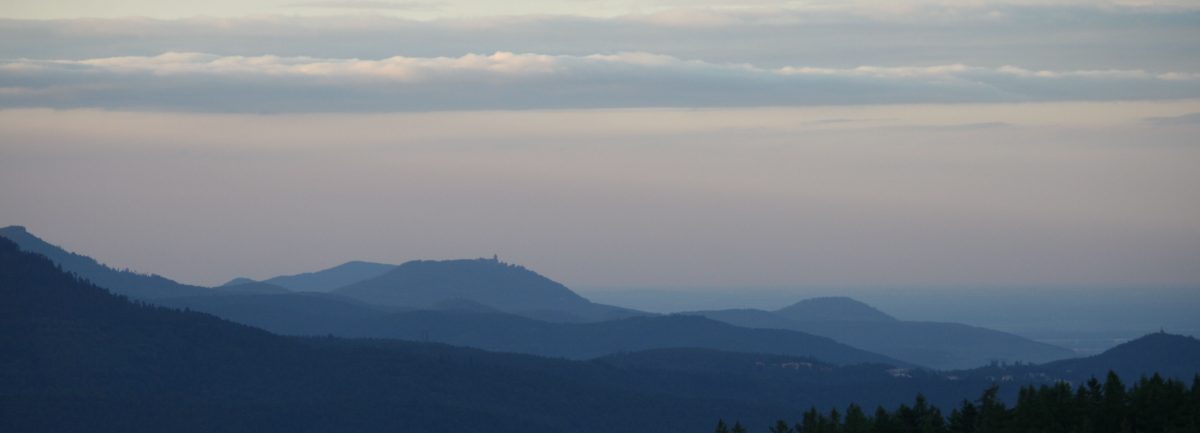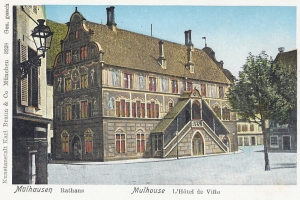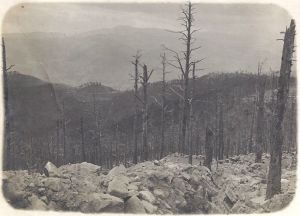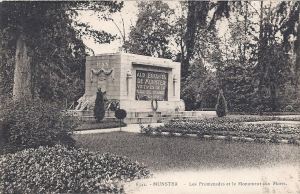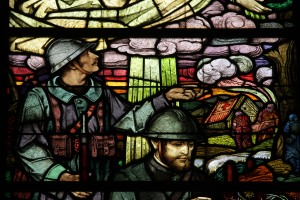The second day of the Tour de France in the beautiful Vosges includes some of the towns and villages which suffered terrible destruction in the Great War. It climbs to altitudes where domination was vital for observation and defence in the challenging conditions of mountain warfare.
Mulhouse
Two postcards, one showing the famous Hotel de Ville and the other the Monument aux Morts (posted 1930).
Ensisheim
Behind l’hôtel de la Régence is an intriguing war memorial commemorating Ensisheim 1675 – 1975. It depicts Turenne’s victory at Turckheim in 1675, saving Alsace from the Imperial army, and the American troops who liberated Alsace and the village in 1945. There is a plaque recording the names of villagers who were deported to concentration camps.
Westhalten
Like many in Alsace, Westhalten’s war memorial depicts the mourning of woman and children.
Soultzmatt
La Cimetière roumain, Soultzmatt, is the resting place of 678 Romanian soldiers who died in captivity during the Great War in Alsace and Lorraine.
Munster
The card below, posted in 1915, shows the town of Munster before the war, looking towards Hohrod and Hohroderg. In the background are the defended observation positions of Hörnleskopf, where vestiges of German structures can still be seen, with Barrenkopf, Kleinkopf and le Linge in the further distance.
Lancaster NN766 crashed into this mountainside on January 7th, 1945. A cross on the hillside commemorates the crew.
Hörnleskopf:
A few images showing the destruction of Munster during the Great War:

The civic cemetery in Munster contains the dead of two World Wars and this Bavarian lion, erected by Bavarian troops in 1916. For a fuller account, please visit my other blog:
http://mightygwyn.wordpress.com/2012/11/10/cimetiere-militaire-munster-a-place-of-stories/
The Monument aux Morts in Munster before the Second World War:
Luttenbach-près-Munster
The camping area in Luttenbach is the site of the château of Coubertin, founder of International Olympic Committee. The château was destroyed in the Great War.
Luttenbach looks across to Reichackerkopf (c 780m), the site of extremely fierce fighting between February and April 1915. It was immensely important, partly because it controlled access to Munster and the two prongs of the valley. 4500 French soldiers and 4000 Germans were killed or lost on this small section.
There are numerous vestiges of the Great War still visible on Reichackerkopf. Many of these settlements in the two valleys were destroyed during the 14-18 war.
Petit Ballon (1163 m)
Kahlenwasen is now a peaceful, popular ferme auberge high on the Petit Ballon. During the Great War the farm premises were used by German troops and destroyed. Signs of trench lines are still visible. (The feature picture of this blog was taken from Kahlenwasen.) The second postcard is a military card.
Sondernach
Sondernach after the Great War; and the French cemetery at Sondernach, Cimetière du Bois de Maettle:
After the War, the villages close to Sondernach were left in ruins.
 Metzeral, before the 14-18 War
Metzeral, before the 14-18 War
 Mittlach (Chasseurs Alpins’ ambulance base in cellar of Mairie-école)
Mittlach (Chasseurs Alpins’ ambulance base in cellar of Mairie-école)
 German military cemetery, Breitenbach.
German military cemetery, Breitenbach.
A new church was built on the site of the wrecked Chapelle d’Emm as a memorial to those who died for France in the Vosges, particularly in the bitter battle for Metzeral, June 1915. The principal memorial window is beautiful.
Le Breitfirst
This small, naïve memorial is not far from the road through le Breitfirst (1280m). Its story is self-explanatory from the inscription.
Col d’Oderen (884 m)
The Col d’Oderen was a frontier point between 1871 and 1914. The original bornes frontières can still be seen. It was also the scene of important action in December 1944. For more information and photos, please see this blog post:
https://thebluelinefrontier.wordpress.com/2014/04/10/two-quiet-cols-oderen-and-bramont/
Servance
Finally, to give a flavour of the landscape around Servance, here is a postcard showing movement of equipment on the Ballon de Servance in winter.
And these two blog posts wouldn’t be complete without …
La cigogne blanche – symbole de l’Alsace!
All postcards and photographs are my own.
